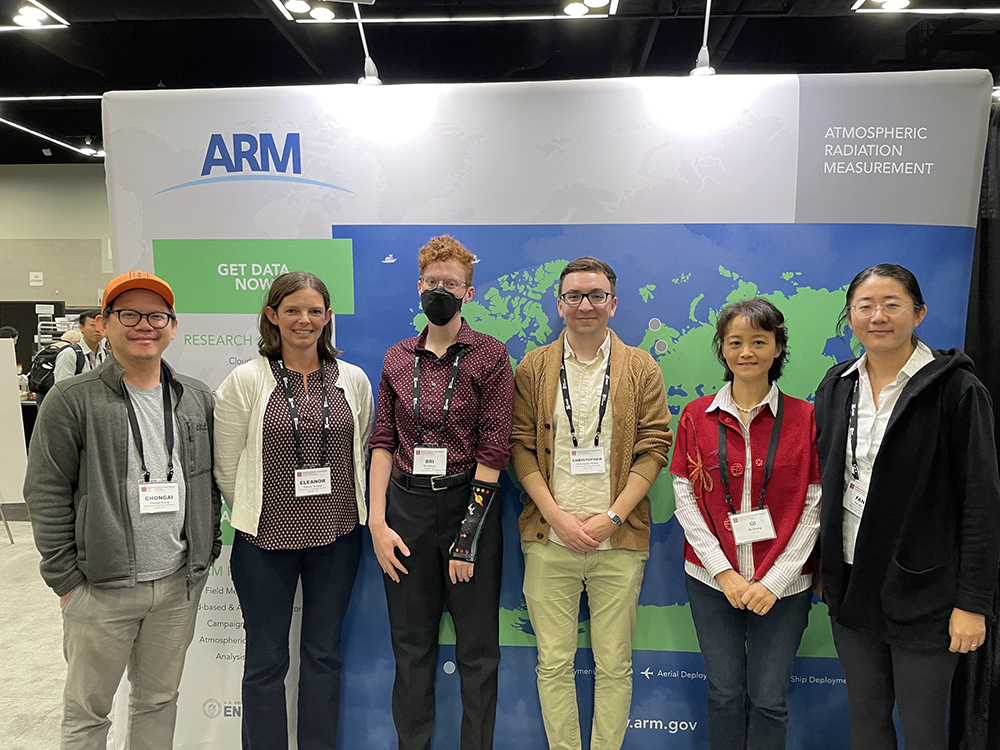DOE Program to Support 2 Graduate Students Using ARM Data
Published: 24 October 2023
New projects will focus on research of interest to ASR

The U.S. Department of Energy (DOE) Office of Science Graduate Student Research (SCGSR) program aims to prepare graduate students for careers in science, technology, engineering, and mathematics (STEM). The program provides awards to outstanding U.S. graduate students, allowing them to conduct part of their thesis research at DOE laboratories. Their projects address scientific challenges in research areas that are key to the Office of Science mission.
The awardees benefit from access to lab resources, capabilities, and expertise. Each graduate student will spend three to 12 consecutive months working at one of 13 national laboratories. While there, a lab scientist will collaborate with them on their research.
DOE announced the selection of 60 graduate students from 48 U.S. universities in the SCGSR program’s 2023 Solicitation 1 cycle.
“This is an incredible experience for students—being able to conduct research at a national laboratory will have far-reaching impacts,” says DOE Office of Science Director Asmeret Asefaw Berhe. “We hope that these students will continue their path in science, and I look forward to seeing what they do in the future.”
Two of the doctoral students plan to use data supported by DOE’s Atmospheric Radiation Measurement (ARM) user facility. Their projects will focus on research of interest to DOE’s Atmospheric System Research (ASR) program.
Bri Dobson, University of Colorado Boulder
Dobson, a fourth-year PhD candidate in chemistry, will soon head to Long Island, New York, to work at Brookhaven National Laboratory (BNL). Dobson will collaborate with a familiar face, BNL atmospheric scientist Chongai Kuang. In spring 2022, Kuang was at ARM’s Southern Great Plains (SGP) atmospheric observatory in Oklahoma to lead the Vertically Resolved New Particle Formation and Transport Study, while Dobson was there working on the Characterizing New Particle Formation and Growth campaign. They were making concurrent measurements at the site.
At BNL, Dobson will use a high-resolution model constrained with quantitative measurements of gas-phase bases they made at the SGP and vertical aerosol measurements made by Kuang on the ARM tethered balloon system. Kuang says Dobson’s work will help scientists “better understand the atmospheric controls on the timing and location of aerosol formation/growth at the SGP—an important process with critical aerosol-climate impacts.”
Christopher Niedek, University of California, Davis
Niedek, a fourth-year doctoral candidate in agricultural and environmental chemistry, will refine his work on quantitative chemical analysis of aerosol samples collected during ARM ArcticShark uncrewed aerial system (UAS) deployments in 2023. He will again collaborate with Fan Mei, the ARM Aerial Facility’s science lead, but now he will work alongside her at Pacific Northwest National Laboratory in Washington state. Earlier this year, the two published a paper with others on using aerosol mass spectrometry to characterize nanogram-level particles collected from uncrewed atmospheric measurement platforms.
“Combining with the ARM UAS deployments, his work will provide a critical vertical aerosol property data set, which cannot be obtained by ground-based monitoring and/or satellite observation,” says Mei.
See the full list of 2023 Solicitation 1 award winners.
The Office of Science is currently accepting applications for the SCGSR program’s 2023 Solicitation 2 cycle, including projects in the ASR: Aerosol and Cloud Processes priority research area. Applications are due November 8, 2023, at 5 p.m. Eastern time. Learn how to apply.
Keep up with the Atmospheric Observer
Updates on ARM news, events, and opportunities delivered to your inbox
ARM User Profile
ARM welcomes users from all institutions and nations. A free ARM user account is needed to access ARM data.


















